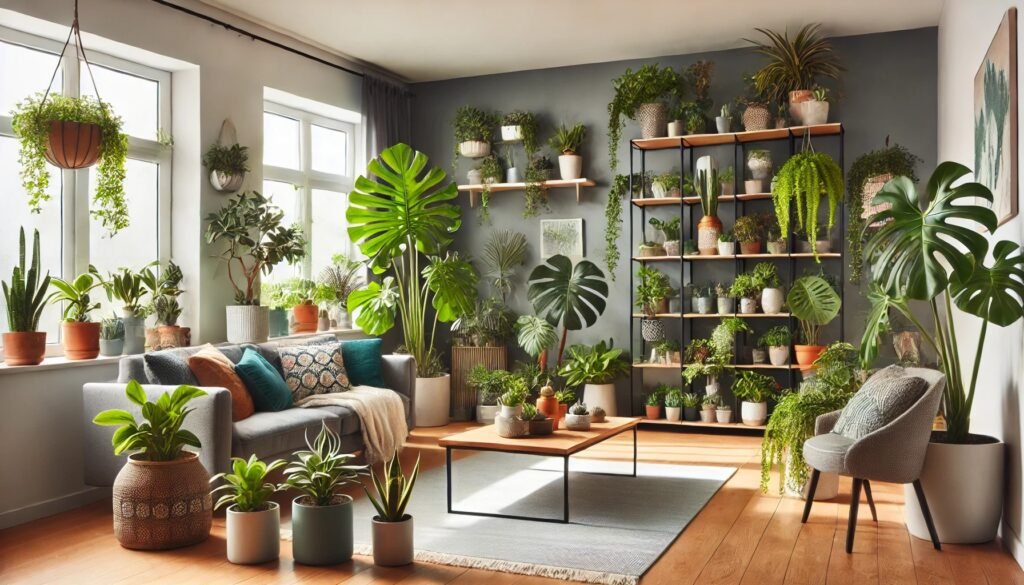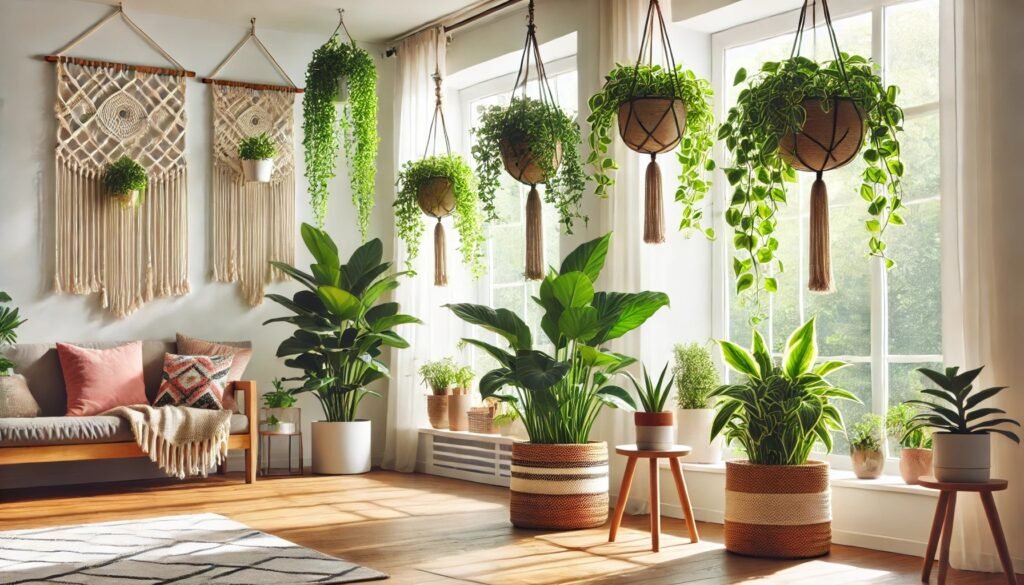
Houseplants bring life and vibrancy into our homes, but the idea of caring for them can feel overwhelming. However, not all plants require constant attention. Some are perfectly content with minimal care, making them ideal companions for busy lives or beginners. In this guide, we’ll explore a variety of low-maintenance houseplants that thrive with simple routines. You’ll learn about their lighting needs, watering schedules, pruning, fertilizing, and even how to propagate them with ease.
Lighting and Watering: The Basics of Plant Care
When it comes to keeping houseplants happy, lighting and watering are two essential factors. But don’t worry—many low-maintenance plants are adaptable and forgiving.
Lighting Preferences
The good news is that most low-maintenance houseplants do well in bright, indirect light. They can even tolerate less-than-ideal lighting conditions. For example, Snake Plants and ZZ Plants are incredibly versatile. These plants can thrive in various lighting environments, from low light corners to well-lit rooms. This flexibility makes them perfect for any spot in your home.
Spider Plants and Peace Lilies are also quite forgiving. While they prefer bright, indirect light, they can still grow happily in moderate light. Placing them near a window with filtered sunlight will keep them healthy and thriving. On the other hand, the Fiddle Leaf Fig and Rubber Plant need a bit more light. These plants love bright spaces but don’t require direct sunlight. A room with ample natural light will keep these plants looking their best.
Watering Schedules
Watering can be tricky, but with these plants, it’s easier than you think. The key is to let the soil dry out between waterings for most of these low-maintenance varieties. Snake Plants, ZZ Plants, and Aloe Vera are prime examples. These plants store water in their leaves, so they only need occasional watering. In fact, overwatering can do more harm than good. It’s better to water sparingly and allow the soil to dry out completely between drinks.
Plants like Pothos and Philodendrons also appreciate a dry spell between waterings. They prefer the top inch of soil to be dry before getting watered again. A simple touch test can help you decide when it’s time to water them.
Peace Lilies and Spider Plants prefer more consistent moisture but still need care not to be overwatered. These plants will let you know when they’re thirsty; Peace Lilies, for instance, tend to droop when they need a drink. Water them when the top inch of soil feels dry, and they’ll bounce back quickly.
Pruning and Fertilizing: Simple Steps for Healthy Growth
Keeping your plants looking their best involves occasional pruning and fertilizing. Fortunately, the plants we’re discussing are low-maintenance in these areas as well.
Pruning for Health and Shape
Pruning is all about maintaining the shape and health of your plants. The good news is that these plants don’t require much pruning. Pothos and Philodendrons, for example, benefit from a trim now and then. If your Pothos starts to look leggy, you can cut back the vines to encourage fuller growth. It’s a simple task that makes a big difference in appearance.
Rubber Plants and Fiddle Leaf Figs might need more attention if they start growing too tall. Pruning the top leaves will help control their height and encourage new growth. Similarly, Peace Lilies and Spider Plants benefit from removing any yellow or brown leaves. This keeps the plants looking fresh and healthy.
For Snake Plants and ZZ Plants, pruning is even easier. These plants grow slowly, so you’ll only need to remove damaged or dead leaves occasionally. It’s a quick task that keeps them looking tidy.
Fertilizing for Vibrant Growth
Fertilizing your plants helps them grow strong and vibrant. However, with these low-maintenance plants, less is more. Most of these plants are content with monthly feedings during the growing season, typically spring and summer. A balanced liquid fertilizer is usually all they need.
Snake Plants, ZZ Plants, and Aloe Vera are particularly easygoing when it comes to fertilizing. They don’t require much to thrive, so a light feeding once a month is plenty.
Plants like Peace Lilies, Pothos, and Philodendrons appreciate regular feeding during their active growth periods. This helps them maintain their lush foliage and vibrant colors. Just be careful not to overdo it—too much fertilizer can harm the roots.
Spider Plants and Fiddle Leaf Figs also benefit from monthly feedings. However, always follow the fertilizer instructions to avoid overfeeding. A little goes a long way with these plants.
Propagation: Growing Your Plant Family
One of the joys of having houseplants is the ability to propagate them. It’s a simple and rewarding process that allows you to expand your collection or share plants with friends.
Simple Propagation Techniques
Many of these low-maintenance plants are incredibly easy to propagate, making them perfect for beginners. Pothos and Philodendrons are two of the easiest plants to propagate. Simply cut a healthy vine just below a node, place the cutting in water, and watch the roots grow. Once the roots are a few inches long, you can plant the cutting in soil.
Spider Plants are another plant that makes propagation a breeze. They produce baby plantlets on the ends of their runners. These plantlets can be potted up once they develop roots, allowing you to create new plants with minimal effort.
Snake Plants and ZZ Plants take a bit longer to propagate, but they’re still easy to work with. Both can be propagated by division or leaf cuttings. For Snake Plants, you can cut a leaf into sections and place them in water or soil until they root. ZZ Plants can be divided at the base, separating the rhizomes into new plants.
Aloe Vera also produces offsets, or “”pups,” at its base. These pups can be removed and potted up to create new plants. It’s a simple process that allows you to grow your Aloe collection quickly.
Final Thoughts
Caring for houseplants doesn’t have to be a complicated task. The ten plants we’ve discussed in this guide are all low-maintenance, making them perfect for anyone looking to enjoy the beauty of nature indoors without the hassle. Whether you’re a beginner or just short on time, these plants will thrive with a little attention and care.
From the adaptable lighting needs of the Snake Plant to the easy watering routine of the Aloe Vera, these plants are forgiving and resilient. Pruning and fertilizing require minimal effort, and propagation is a rewarding way to expand your plant family. With these plants in your home, you can enjoy lush, healthy greenery without the stress.
Remember, every plant is unique, so take the time to observe and adjust their care as needed. With a little love and attention, your low-maintenance houseplants will bring life and beauty to your home for years to come.
Stay connected with the world of plants! Subscribe to Phylofy for expert gardening tips, DIY projects, and eco-friendly inspiration. Join our community and nurture your love for nature. Don’t miss exclusive content and updates. Subscribe now!



